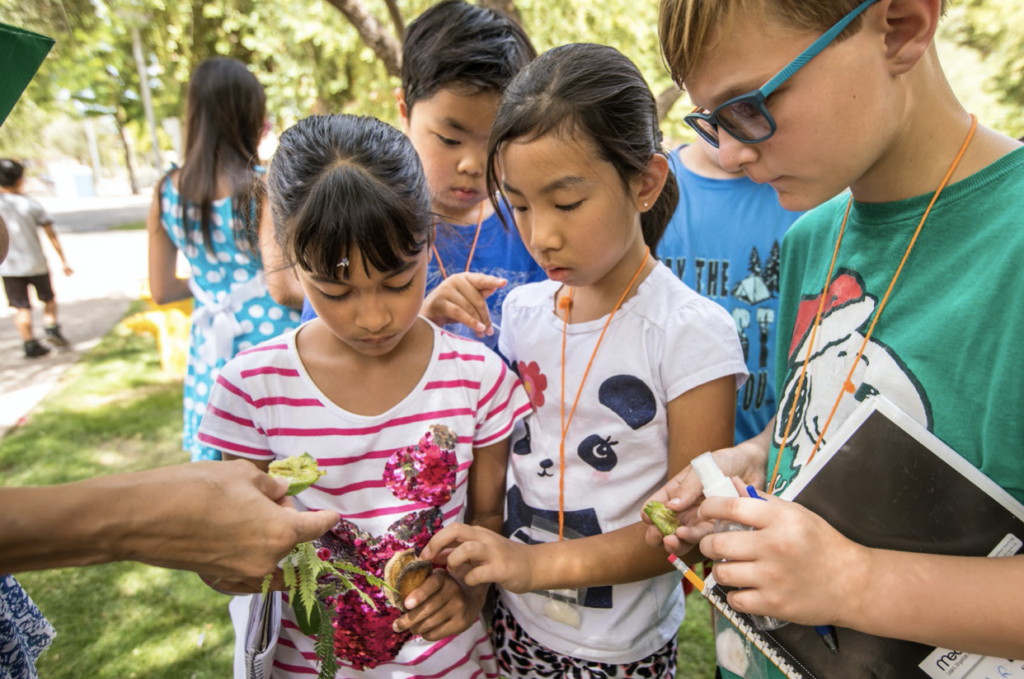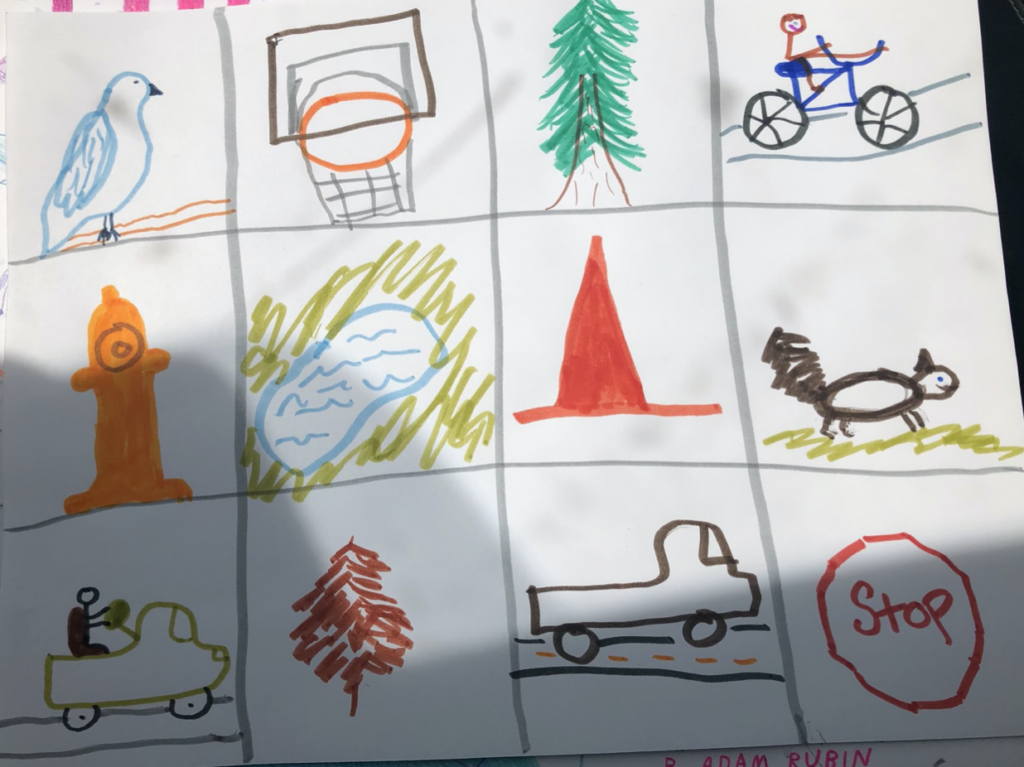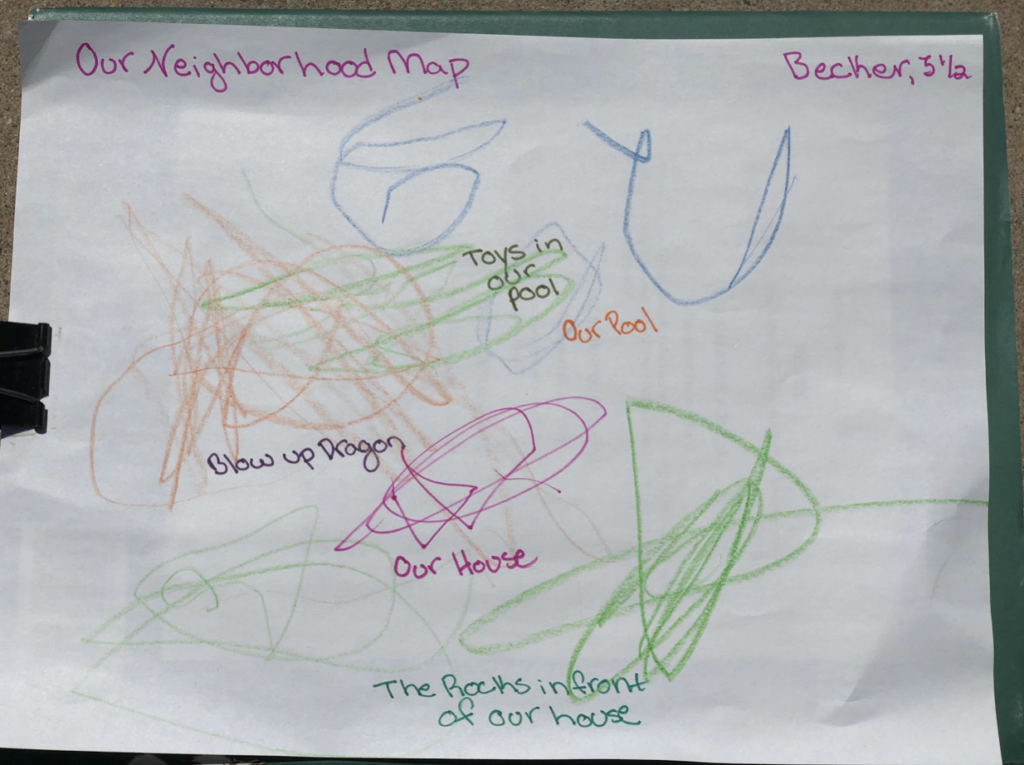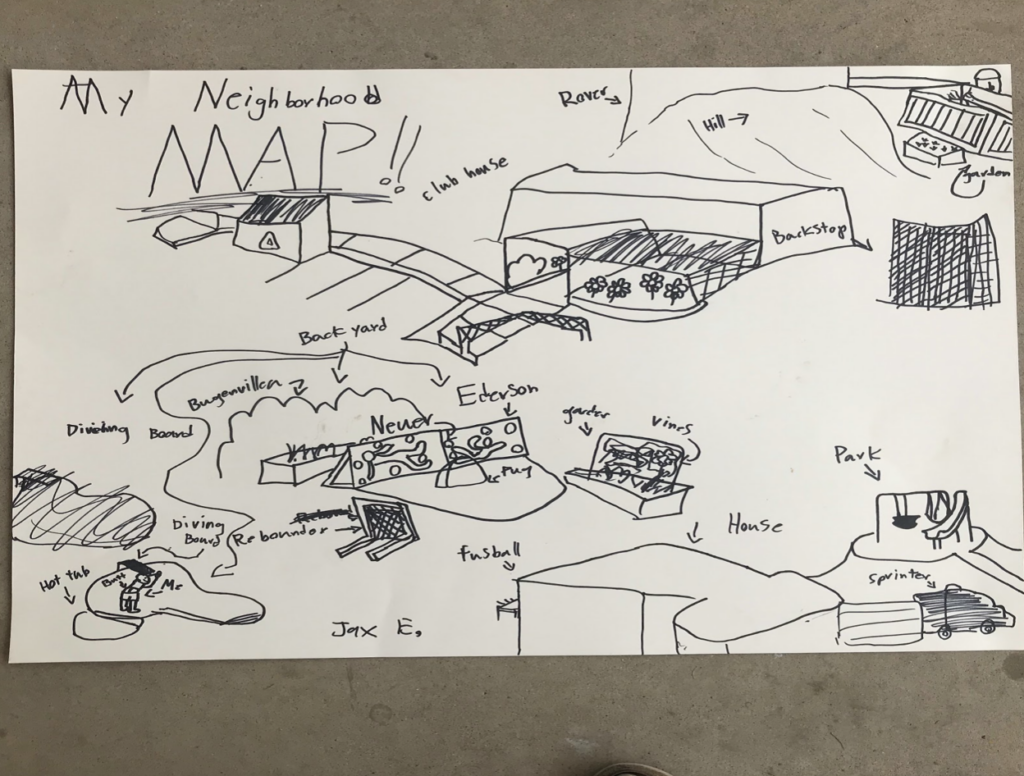Curators notes:
This exploration gives kids an opportunity to explore their world and chart their adventure through writing, drawing, and map-making.
What do kindergartners and first graders write about? Everything! The whole world is a possible topic to draw, talk, and write about. In this exploration, we will explore your students’ world. You might take a neighborhood walk, or an exploration around your school, or invite students to gaze out your classroom window.
You are welcome to do as much or as little of this exploration as you like, and join in where you can. Feel free to tackle the invitations that appeal to you, to get out of your comfort zone and try something new.
This exploration offers students an opportunity to think about, notice, document, and share their local neighborhood, back or front yard, or outdoor surroundings (eg. park, block, street). There is no “right” way to do this, so just dive in whether your students live in an urban or rural setting or whether you can explore the outdoors or dream about it from inside your classroom. Whatever the circumstance, take a walk with us and let’s make and share maps!

Before you begin here are some things you might need for this activity:
- A piece of blank paper.
- A pencil or pen or crayons.
- Optional: Glue stick and magazines (if you want/have)
- Optional: Camera
Explore
Neighborhood Walk: Take a brief walk around your neighborhood block, local park, or schoolyard and ask students to notice what you see. They can take mental or digital pictures, and/or gather objects and images of places you stop along the way (e.g. leaves, rocks, pinecones, flower petals) that help them remember the places you visit. Or, have students bring a notebook and markers or pencils or crayons and draw what they see along the way.
Create
Draw A Map: Ask students to take a blank page and draw or make a map of their neighborhood. They can use the objects or drawings or notes they collected to remember key spots along your walk (e.g. a special tree, a street, a corner, houses, a park, a school, etc.) Or, they can arrange their found objects on the ground and create a map with the objects. Remember: A map for kids does not have to be complicated. It can be representations of things and places they noticed on their walk.
Make A Map: OR students can find a box, egg cartons, or toilet paper tubes and create a 3D representation of the neighborhood inside of it.
Example: parent and child co-created map:

Step 3: Write
On another page: Ask students to draw or write a story of a place or memory in their neighborhood. Here are some questions you can use to help them get started:
- What was a special time you want to remember in your neighborhood?
- What is a special spot you love that you want to show and describe?
- Who lives in your neighborhood?
- What are the sights and sounds?
Example: Becker, Age 3 ½:

Example: Jax, Age 9:

Step 4: Connect
Part of being a writer is sharing your work and ideas with others. Make sure that students get to share their writing in class, at a larger school gathering or with family or friends.
Resources
Books to read or listen to that might inspire writing about your neighborhood:
Harlem by Walter Dean Myers
Last Stop On Market Street by Matt De La Peña.





